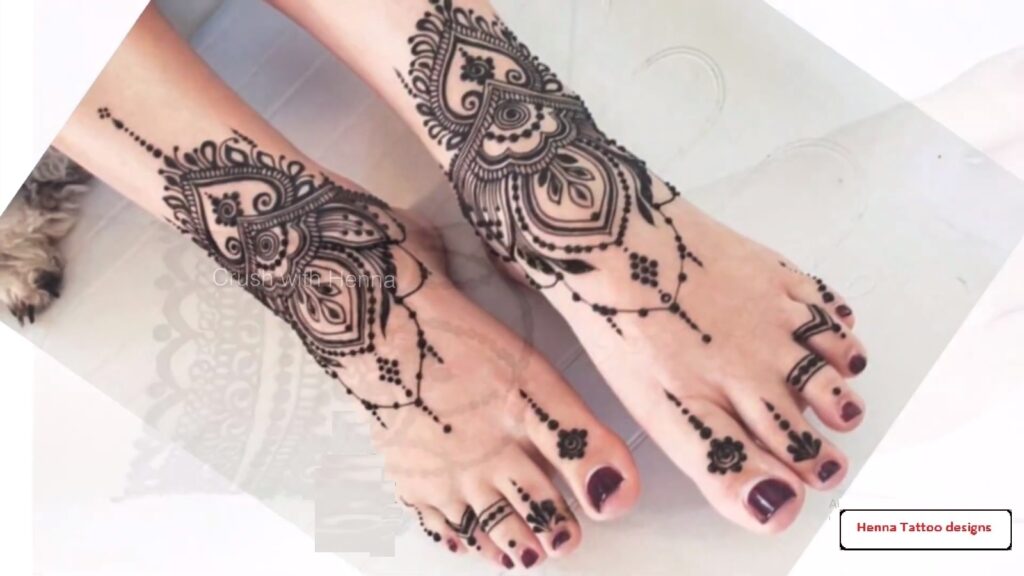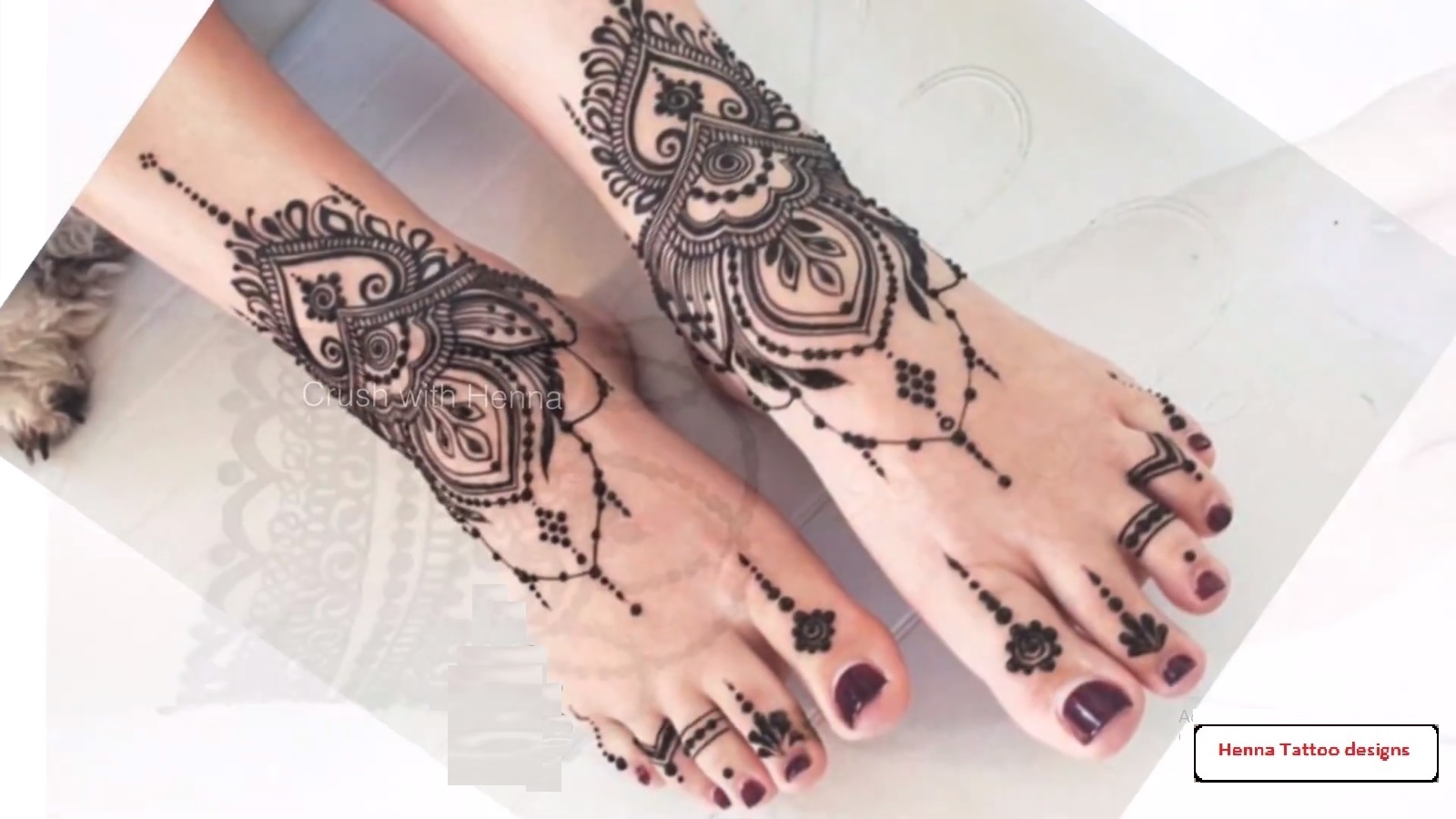
Intricate Artistry: Exploring the Beauty and Significance of Foot Tattoos with Henna
Foot tattoos with henna have become increasingly popular, blending ancient traditions with modern aesthetics. These temporary works of art offer a beautiful and pain-free way to adorn the feet, often carrying deep cultural or personal significance. This article delves into the world of henna foot tattoos, exploring their history, application, symbolism, and aftercare, offering a comprehensive guide for anyone considering this unique form of body art. Whether you’re drawn to the intricate designs or the cultural heritage, understanding the nuances of foot tattoos with henna is essential.
The Rich History of Henna
Henna, derived from the *Lawsonia inermis* plant, has been used for centuries for cosmetic and medicinal purposes. Its origins can be traced back to ancient Egypt, where it was used to stain the fingers and toes of pharaohs. From there, the practice spread across North Africa, the Middle East, and South Asia, becoming an integral part of cultural traditions, particularly in weddings and celebrations.
In these cultures, henna is more than just a decorative element. It symbolizes good luck, prosperity, and protection. The application of henna is often a communal event, with women gathering to share stories, songs, and blessings for the bride-to-be. The intricate designs, often incorporating floral motifs, geometric patterns, and religious symbols, reflect the cultural values and beliefs of the community.
Why Choose Henna for Foot Tattoos?
There are several compelling reasons why individuals opt for henna foot tattoos over permanent ink. Firstly, henna is temporary, lasting anywhere from one to three weeks, depending on the quality of the henna and aftercare. This allows for experimentation with different designs without the commitment of a permanent tattoo. Secondly, the application of henna is generally painless, making it an appealing option for those who are hesitant about the pain associated with traditional tattooing. Thirdly, henna is a natural dye, derived from plant leaves, which reduces the risk of allergic reactions compared to some synthetic tattoo inks. Finally, henna foot tattoos offer a unique way to celebrate cultural heritage or express personal creativity.
Understanding Henna Paste and Application
The quality of the henna paste is crucial for achieving a rich, dark stain. Traditional henna paste is made by grinding dried henna leaves into a fine powder and mixing it with lemon juice, essential oils (such as lavender or tea tree oil), and sugar. The lemon juice helps to release the dye molecules, while the essential oils enhance the color and fragrance. The sugar helps the paste adhere to the skin.
The application process typically involves using a cone or applicator bottle to carefully draw the desired design onto the skin. Skilled henna artists can create intricate and elaborate patterns, often freehand. Once the design is complete, the henna paste needs to remain on the skin for several hours to allow the dye to penetrate the outer layers of the epidermis. The longer the paste stays on, the darker and longer-lasting the stain will be.
Symbolism in Henna Foot Tattoo Designs
The designs used in henna foot tattoos often carry symbolic meanings. Floral motifs are common, representing beauty, joy, and new beginnings. Lotus flowers, in particular, symbolize purity and enlightenment. Geometric patterns, such as mandalas, represent the universe and spiritual harmony. Animal motifs, such as peacocks or elephants, can symbolize grace, strength, and good fortune. Understanding the symbolism behind these designs can add a deeper layer of meaning to your henna foot tattoo.
Different cultures also have their own unique henna design traditions. For example, in Indian henna designs, intricate paisleys and peacock feathers are commonly used, while in Moroccan henna designs, geometric patterns and tribal symbols are prevalent. Exploring these cultural variations can provide inspiration and insight into the rich history and symbolism of henna art.
Preparing for Your Henna Foot Tattoo
Before getting a henna foot tattoo, it’s important to prepare your skin properly. Exfoliate the area to remove any dead skin cells, which can prevent the henna from staining evenly. Avoid applying lotions or oils to the skin, as these can create a barrier that inhibits the dye from penetrating. If you have sensitive skin, it’s a good idea to do a patch test with a small amount of henna paste to check for any allergic reactions.
Choose a reputable henna artist who uses natural henna paste. Avoid artists who use black henna, which contains a chemical dye called paraphenylenediamine (PPD) that can cause severe skin reactions and permanent scarring. Natural henna will always stain the skin a reddish-brown color. Discuss your design ideas with the artist beforehand to ensure that they can create the desired pattern and that you understand the symbolism behind it.
Aftercare Tips for Long-Lasting Foot Tattoos with Henna
Proper aftercare is essential for achieving a dark, long-lasting henna stain. After the henna paste has dried, gently scrape it off instead of washing it off with water. Avoid using soap on the tattooed area for the first 24 hours. Apply a natural oil, such as coconut oil or olive oil, to the skin to keep it moisturized and protect it from water. Avoid prolonged exposure to water, as this can fade the henna stain. When showering or swimming, apply a thick layer of oil or petroleum jelly to the tattoo to create a waterproof barrier.
Avoid using harsh chemicals or exfoliants on the tattooed area, as these can strip away the outer layers of skin and fade the henna stain. Wear loose-fitting shoes and socks to avoid rubbing or pressure on the tattoo. With proper aftercare, your henna foot tattoo can last for up to three weeks, providing a beautiful and temporary adornment for your feet.
Potential Risks and Precautions
While natural henna is generally safe, it’s important to be aware of potential risks and precautions. As mentioned earlier, avoid black henna, which contains PPD and can cause severe skin reactions. Always choose a reputable henna artist who uses natural henna paste and practices good hygiene. If you have sensitive skin or allergies, do a patch test before getting a full henna tattoo. If you experience any itching, redness, or swelling after getting a henna tattoo, seek medical attention immediately.
It’s also important to be aware of the cultural significance of henna art. Avoid appropriating cultural designs without understanding their meaning or significance. Respect the traditions and customs associated with henna art, and be mindful of the cultural context in which it is practiced.
The Growing Popularity of Foot Tattoos with Henna
Foot tattoos with henna are experiencing a surge in popularity, driven by social media and the desire for unique and expressive forms of body art. Celebrities and influencers have embraced henna foot tattoos, showcasing their intricate designs and inspiring others to explore this ancient art form. The temporary nature of henna makes it an appealing option for those who want to experiment with different styles and designs without the commitment of a permanent tattoo.
Henna foot tattoos are also gaining popularity as a form of self-expression and empowerment. They allow individuals to adorn their bodies with beautiful and meaningful designs, celebrating their cultural heritage, personal beliefs, or artistic creativity. Whether it’s a delicate floral pattern or a bold geometric design, a henna foot tattoo can be a powerful statement of identity and self-expression.
Finding Inspiration for Your Henna Foot Tattoo Design
There are numerous sources of inspiration for henna foot tattoo designs. Online platforms like Pinterest and Instagram are filled with stunning examples of henna art from around the world. Books and magazines dedicated to henna art offer a wealth of design ideas and cultural insights. Local henna artists can also provide inspiration and guidance, helping you create a unique and personalized design that reflects your individual style and preferences.
Consider incorporating elements that are meaningful to you, such as your favorite flowers, animals, or symbols. Think about the symbolism you want to convey with your design, and choose motifs that resonate with your personal values and beliefs. Don’t be afraid to experiment with different styles and patterns, and collaborate with your henna artist to create a truly unique and unforgettable foot tattoo with henna.
Conclusion: Embracing the Art of Foot Tattoos with Henna
Foot tattoos with henna offer a beautiful and meaningful way to adorn the body, blending ancient traditions with modern aesthetics. Whether you’re drawn to the intricate designs, the cultural heritage, or the temporary nature of henna, understanding the nuances of this art form is essential. By choosing natural henna, preparing your skin properly, and following proper aftercare, you can enjoy a stunning and long-lasting henna foot tattoo that celebrates your individuality and creativity. Embrace the art of foot tattoos with henna and discover the beauty and significance of this unique form of body art. [See also: Henna Body Art: A Comprehensive Guide] [See also: Temporary Tattoo Ideas for Summer] [See also: The History and Cultural Significance of Henna]

